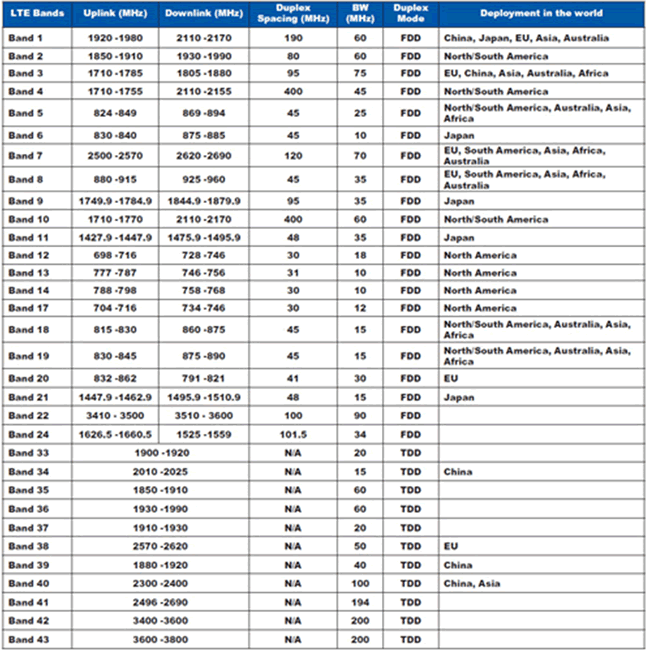4G SIM Card Router and Its Frequencies
Accompany with 4G and 5G Times, there are so many 4G&5G Bands worldwide, every ISP is running 1 or more bands for their network service.
As a type of terminal M2M Devices, 4G sim card router is also referred to many bands. When choosing a router for your region, most people consider the obvious physical aspects of the device first – how rugged is it? What connections does it offer? How fast is able to run and how much power does it consume?
What is not as often discussed is how good the reception is on the 4g sim card router. This makes sense – the cellular network is something of a niche topic and is not something many SCADA or Embedded Systems engineers will have encountered before.
This document is intended to introduce the idea of Frequency Bands, the role of 4G and 3G sim card routers in today’s cellular network and the role of these technologies going forward.
What are frequency bands?

Cellular networks operate on Radio Waves. Radio waves are broadcasted between base stations and cellular devices and the variation of these signals is used to determine what data is being sent. For this system to work, it is critical that different signals are kept separate so as not to interfere with each other – if two devices attempt to transmit a signal at the same frequency at the same time, they would shout over each-other and it would be difficult for the base station to understand either device.
To achieve this, the full frequency spectrum is divided into different frequency bands. Each band represents a range of frequencies, with a center frequency and a given bandwidth. Frequency bands are then allocated for different uses by ACMA on the behalf of the Australian Government. Some bands are allocated for scientific or industrial use. Others are assigned as free for anyone to use providing they meet certain requirements, such as the 415MHz and 915MHz band used in remote controls or the 2.4Ghz and 5Ghz band used in Wi-Fi and other wireless communications standards.
For cellular applications, the band is auctioned off and sold to different ISP such as China Mobile or China Union. The ISP then deploys equipment to their towers that are capable of operating on the frequencies they have rights to. The 3GPP standard specifies how remote devices should communicate with these towers in order to share a given frequency band between many customer devices.
There is a snag in this system. Around the world different governments regulate the usage of their own EM Spectrum differently, and they may auction off different frequency bands to those used in Australia. Additionally, as time goes on and older technologies are retired (such as Analog Television) spectrum previously allocated to those technologies is freed up to be used in new 4G cellular networks for greater speed or greater coverage.
The result is that each different carrier in each different nation of the world may use or not use whichever frequencies they are able to licence. If your device does not support a frequency offered in your area, your device may get no or substandard reception.
2. Coverage of a 4G module capable of covering all frequency bands is an impossible undertaking. It simply makes the module too complex and too expensive. As a result, each manufacturer will offer their module in different variants to suit different markets.
Because there is no single radio module can cover all bands at the same time, then there are many models of modules covering serval bands of each market. Meanwhile 4g sim router is also coming with many versions to fit for different market’s frequency requirements. Kindly suggest that before purchase a 4g sim card router, firstly check with the using frequencies, then choose a suitable router.

 Networking
Networking EMBEDDED SYSTEMS
EMBEDDED SYSTEMS Switches
Switches Wireless Solutions
Wireless Solutions Industrial Computer
Industrial Computer Cloud Services
Cloud Services



